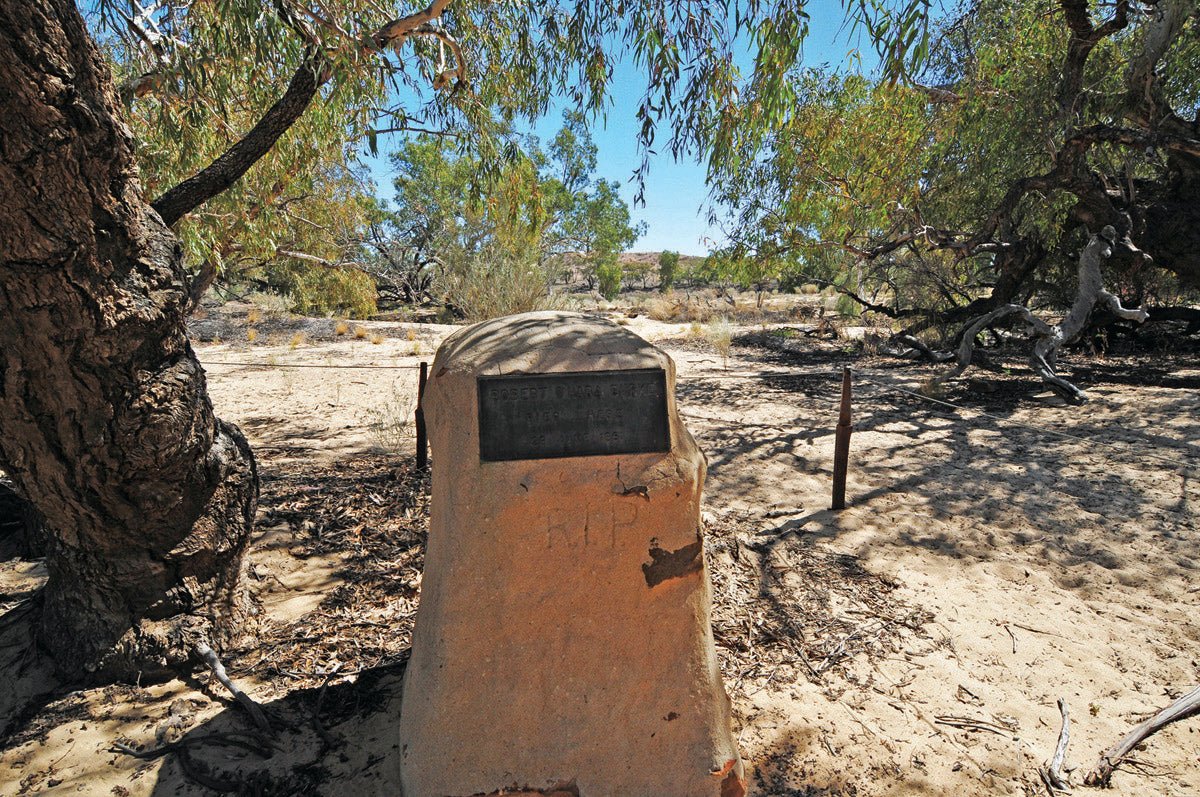
Reminders of Our Explorers
|
|
Time to read 3 min
|
|
Time to read 3 min
I was up in the Flinders Ranges at the end of last year and wandering through the Blinman Cemetery when I came across the grave of William Kekwick.
Don’t know who he is?
He was second-in-command to John McDouall Stuart on his expeditions across Australia between 1859 and 1863. Unlike the more famous Robert O'Hara Burke and John Wills, Stuart along with Kekwick and their men, came back from those crossings to talk about it.
But how did he end up buried in tiny, still relatively remote, Blinman?
In 1872 Kekwick was appointed 3IC, with the official role of botanical and natural history collector to William Gosse’s expedition, which was to explore west of Alice Springs and to find a feasible route through to Western Australia — as an aside, during that gruelling expedition, Gosse ‘discovered’ and named the great monolith of Central Australia, Ayers Rock.
Kekwick became ill at Beltana, now almost a ghost town south of Leigh Creek in South Australia and was, rather surprisingly I thought, taken to Nuccaleena (which today is nothing more than some impressive old mining ruins), where he later died.
Buried in Blinman, the writing on Kekwick's impressive headstone was becoming illegible a hundred or so years later, so the brass plaques around the obelisk base were fitted and unveiled in 2000.=
HE’S NOT THE ONLY ONE
Another equally impressive monument to an explorer is the one to Ernest Giles. Ol’ Giles would have to be one of the best of our early western desert explorers — and certainly the most eloquent with the names he sprinkled across our desert landscape being a darn site more interesting than most of his contemporaries.
But when he died in Coolgardie in 1897, some 25 years after his great expeditions, he had been working as a clerk, and was almost unknown and penniless. Still his gravestone, tucked away in the Coolgardie cemetery, indicates that he was remembered by some as it is a pretty impressive edifice.
Frank Jardine, another explorer I admire, was just 22 years old in 1863 when he led a small party of men and a few hundred head of cattle north from Rockhampton to the tip of Cape York. Their route initially followed the Gilbert and Staaten Rivers before striking north along the western side of Cape York before crossing to the east and then following the Jardine River downstream to the sea before turning to his final destination, Vallack Point.
After settling into Somerset as Police Magistrate and then as a private land owner, Frank lived out his life, dying in 1919.
His grave and that of his Samoan Princess wife, Sana, is located in the bush just above the high tide mark on the small bay below where the Somerset residence once stood. A few other graves are scattered nearby overlooking Albany Passage, but sadly the brass plaques on the Jardine’s grave have been flogged, making it impossible for people who don’t know the Jardine legend to know, or care, of their last resting place. Still, at least the distinctive headstone gives an indication that buried here, in this lonely spot, is someone of importance.
Of course, the most famous graves of any Australian explorer are those of Burke and Wills and while relative few people actually visit their current graves and impressive headstone in the sprawling Melbourne General Cemetery, many visit the sites where they were first buried on the edge of Cooper Creek in northern SA.
Most people know the basic story of the bumbling Robert O’Hara Burke and his loyal young companion, William Wills. They, along with Grey and King had reached the north coast (or at least got close) of Australia in early February 1861 before turning for the long march back to Cooper Creek. Grey died along the way (some would say under suspicious circumstances) and while Burke and Wills died around the end of June 1861, King survived.
Alfred Howitt and his relief party, having been sent out by the Victorian government, arrived on the Cooper in September of that year and found King living with the natives and then the remains of Burke and Wills a few days later. They buried them near where they had fallen. Returning to Melbourne, Howitt was immediately called upon to return to the Cooper and recover the bodies of Burke and Wills which he ultimately did. The two heroes of the expedition were then given the first State Funeral in Australia in January 1863.
So ended the life of these two not so successful explorers, but not the fascination with their story and so it is with many of the graves of these pioneers dotted across the Australian landscape.